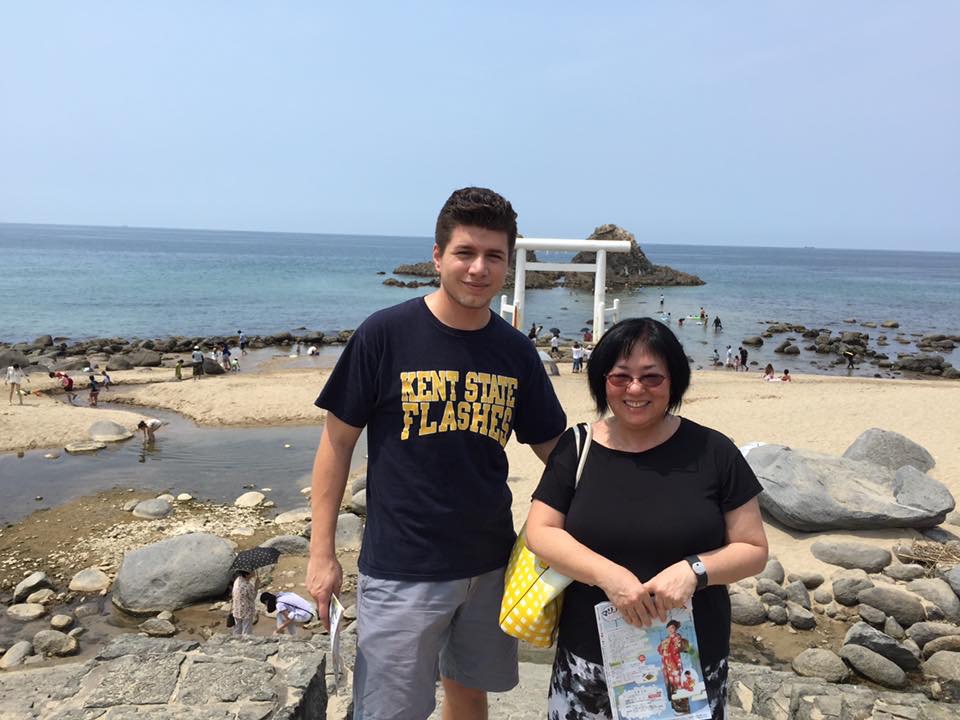WEEK 7 - In the lab and a visit to Kyushu University
Konnichi wa from the Primate Research Institute (Week 7: July 26 – August 2)
I’ve got three weeks left at the PRI which doesn’t seem like much time, but given my laboratory training in the previous six, I’m certain that the final three will provide even more great opportunities to hone my newly acquired molecular biology skills. Now that we’ve shifted our focus to the age-related progression of spermatogenesis in macaques, I can continue with the required data collection to help address some of the questions that I outlined in earlier blogposts. Outside of the laboratory, I was able to take a weekend trip to Fukuoka, a big city on the Japanese island of Kyushu, to give a guest lecture at Kyushu University. Keep reading to hear all about it!
Hitting the Home Stretch
This week in the laboratory, I continued with the sample preparation and data collection for our age-progression study of macaque spermatogenesis. The methods, techniques, and procedures are still the same: RT-PCR to identify which genes are expressed, then immunohistochemistry to see where in the cells they’re expressed. Now that we’re shifting focus toward the study of juvenile and adult macaque monkeys, this required the preparation of more protein-coding DNA sequences for RT-PCR, plus tissue samples for immunohistochemistry. Though I started the work this week, full analysis of these newly prepared samples will extend into next week.
In order to get a more complete picture of what genes are being expressed, I generated the protein-coding DNA sequences from a wide variety of tissue samples of both juvenile and adult monkeys; moreover, I collected these samples from two species, the Japanese macaque and the rhesus macaque for comparison. This was great experience since I was able to see how various tissues differ in terms of handling, processing, and extraction methods. Further, the samples generated from these tissues will help in other downstream analyses as Kuroki-san, a fellow graduate student in the Molecular Biology section, will examine the tissue-specific expression of Kiss1, a gene that encodes the important sexual development hormone kisspeptin.
Lastly, I was able to prepare some tissue samples for immunohistochemistry, which involves embedding the tissue in hot paraffin wax. This process has given me the most trouble over the past two weeks, but I think I figured out how to produce nice sections of tissue that can be stained for protein expression. I will confirm the quality of these tissue sections next week by using the common Hematoxyelin Eosin stain to check for proper cell structure, and then proceed with the official staining for my specific gene products.

Pouring some paraffin wax into a mold which will eventually contain our tissue samples. On this day, I was preparing for two samples…so I guess you could say I ended up with a “paraffin-ished” molds!
Heading to Kyushu University
Back in April at the 2016 American Association of Physical Anthropologists conference, I happened to meet a biological anthropologist from Kyushu University, Dr. Noriko Seguchi. She had been host to an NSF EAPSI fellow a few years ago and, when I mentioned that I would be an EAPSI fellow this summer, she invited me to visit her department at Kyushu University and give a guest lecture on my research. Of course, I accepted, and this past weekend I hopped on a bullet train to Fukuoka, home of Kyushu University.

Many thanks to Dr. Noriko Seguchi for inviting me to Kyushu University to give a guest lecture on my research/EAPSI fellowship. I’m holding one of the fancy fliers for my talk that she posted all around her department!

We were able to check out the quiet beaches near Fukuoka for a bit. Dr. Seguchi studies craniometrics so it was a great time picking her brain while enjoying the nice scenery!
Thanks for checking in on my research and cultural experiences thus far. Just a few more weeks left at the PRI for me, so let’s see if I can generate enough data, see some more sights, and get to the closing ceremony in Tokyo all in one piece. Until next week, matane!
This research is funded by the National Science Foundation East Asia and Pacific Summer Institutes for U.S. Graduate Students (EAPSI) in collaboration with the Japan Society for the Promotion of Science (JSPS).


